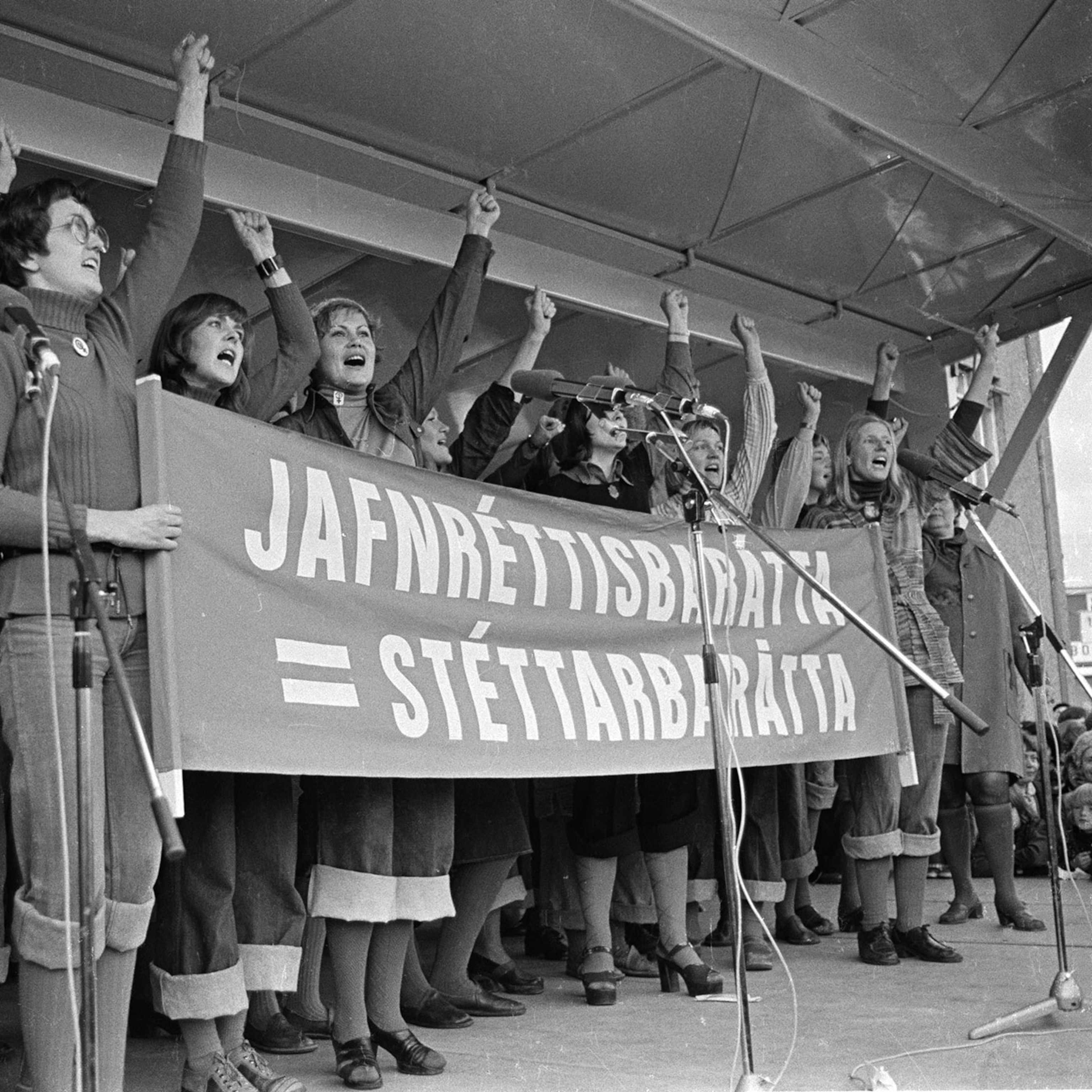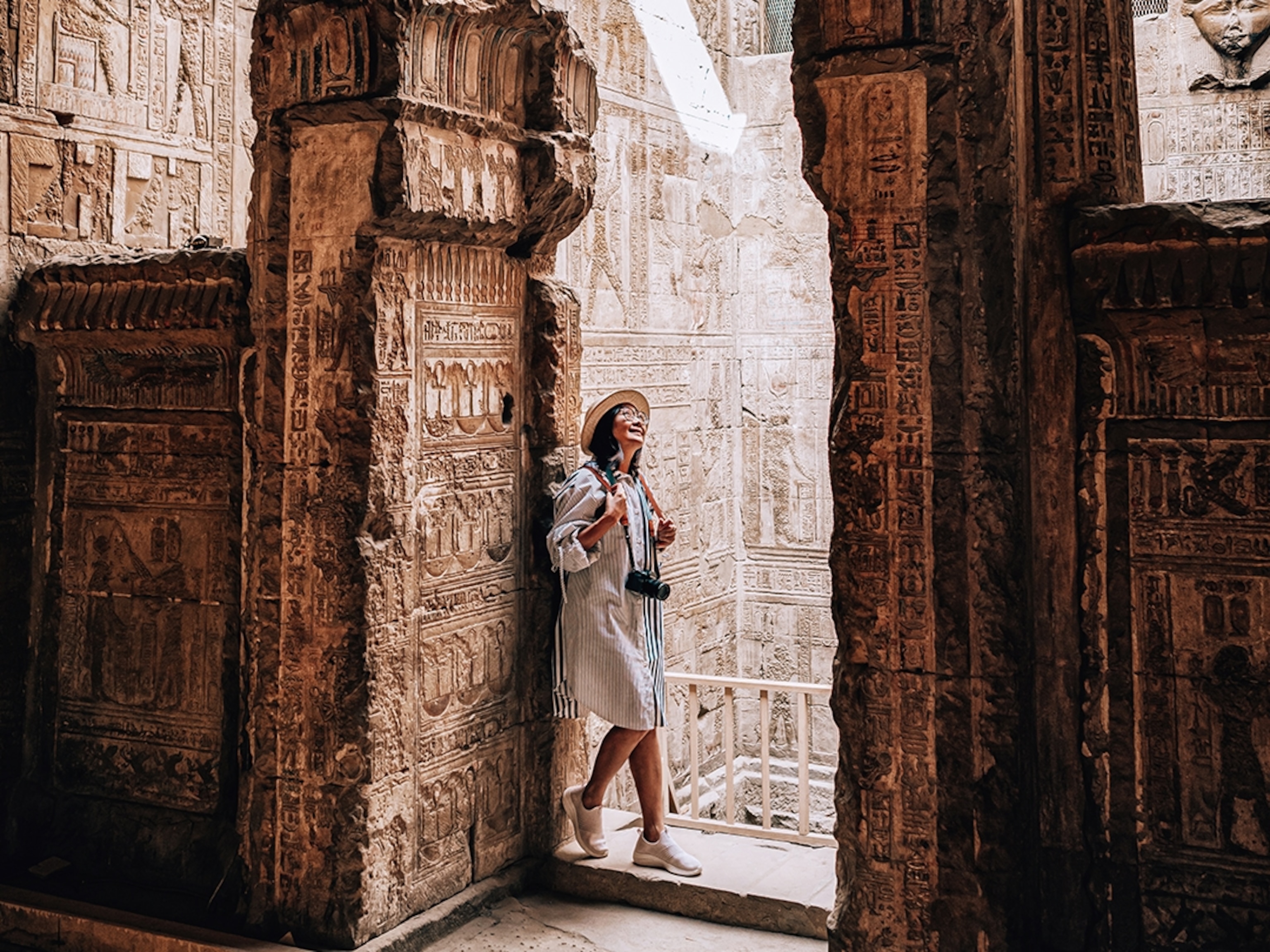
Photos of Women by Women Celebrate a Shared Sisterhood
Seven National Geographic photographers tell stories of empowerment, ritual, and redefined beauty.
In honor of International Women's Day, we asked seven National Geographic photographers to reflect on a time where being a woman played a pivotal role in documenting a particular story, whether it be in gaining privileged access to a situation or bringing a nuanced approach to a subject. Here are their thoughts.
I love how being a woman can be an instant ticket to a community, like in the photo above when I was at a Bedouin wedding in the Sinai Peninsula of Egypt.
The scene was incredible with camel races, feasting, and dancing. When I told one of the hosts I had a present for the bride they suggested I give it to her myself. In traditional Bedouin culture, men and women who are not from the same family don’t often mix, but because I am a woman, I was allowed.
They led me to a house where access was restricted to women and immediate male relatives of the bride. I made this picture while sitting next to the bride as these beautiful young girls danced in her honor. We didn’t speak the same language, but we connected.

Margaret is a mother, wife and soldier. She had a double mastectomy at age 29 as a preemptive measure against cancer. She also chose not to reconstruct.
She became an outspoken advocate for early detection testing for the hereditary BRCA2 gene mutation after her mother was diagnosed with breast cancer and the same diagnosis claimed the life of her aunt. Therefore, she agreed to have her portrait taken.
We decided together to make an image without her shirt. She told me part of her healing process had been making herself vulnerable and nothing had made her feel more comfortable with being vulnerable than allowing herself to be photographed topless. It enabled her to take a step back and look at her body and appreciate every peak and valley, every fold and cross section, and every scar she has.
When I asked her if being a women photographer made a difference to her, she said yes, but it was not as straight forward as that. She told me it was because of who I was as a person that brought an extreme amount of compassion to the moment, but felt that me being a woman and strongly identifying with that, I was able to draw out elements of her humanity that a man never could have known existed.

Lynsey Addario
I started photographing conflict zones in 2000. On the frontlines in Iraq and Afghanistan, I was always either the only woman, or one of a few women, among dozens of 20-something year old men bursting with testosterone. It wasn't until roughly a decade later, when the U.S. military introduced "Female Engagement Teams"—all-female units attached to infantry patrols in southern Afghanistan—that I actually had a place to lay my head alongside other women at the end of a patrol day.
When I was assigned to cover the FET teams for the New York Times, I was immediately situated in the female hooches, or living quarters, at remote bases. The quarters were off-limits to men, so I had a unique perspective of female Marines in their down time—and was secretly thrilled to see what other women on the frontline looked like. What did they bring with them to war? Did they sneak (despite obvious weight limitations on luggage) delicious-smelling moisturizing lotions (like me) to remind them of home? Or sneakily put on makeup in the shadow of their helmets (like me) to try to retain some semblance of femininity amidst our inevitable desire to be strong and tough and keep up with the men?
When I photograph, my goal is always to capture the most authentic scene from any situation, to be the proverbial fly on a wall. That, obviously, is impossible, but when female units started appearing on the frontlines of war in Afghanistan, I finally felt like I was one step closer to blending in and to documenting a fresh perspective of war that had gone on too long.
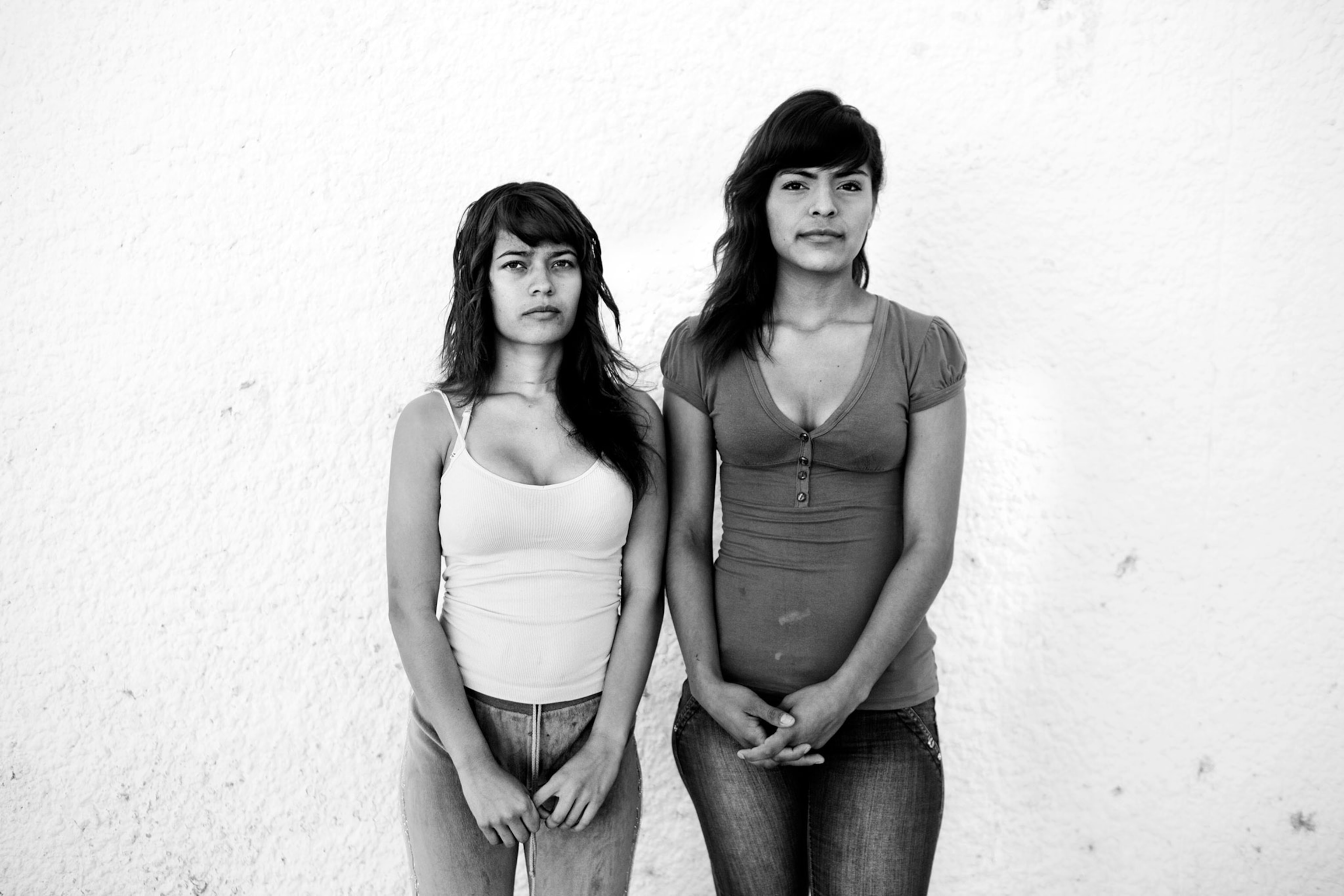
In 2010, when this picture was taken, Ciudad Juarez was the most dangerous city in the world. 3,000 people were murdered that year alone. And as a result of Mexico's drug war, the number of women in prison for federal crimes quadrupled. The rise of women’s involvement in drug related crime was directly linked to poverty and lack of employment opportunities; systemic problems in Juarez that escalated after the 2008 financial collapse.
The Juarez prison was very dangerous for inmates, staff, and visitors alike. It took a lot of finagling to gain access, and even then, it was only for a few hours with an escort. But I kept going back. Those “few hours” eventually turned into many, and the escort who accompanied me gradually left me alone. This was only possible in a women’s prison, with female guards, as a female photographer.
The Ramirez sisters had been refusing the media any photo or video access. I tried anyway. I eventually was given a chance to meet them through a chain link fence. At the time they were in a separate section of the prison grounds, isolated from the rest of the female inmates for their own safety. I explained to them that I wanted to tell their story from their perspective and to give them a voice to plead their case. Initially they refused, until I also offered them time to shower, change, and put on makeup. I’m not sure if any of the local press had thought of offering them that.
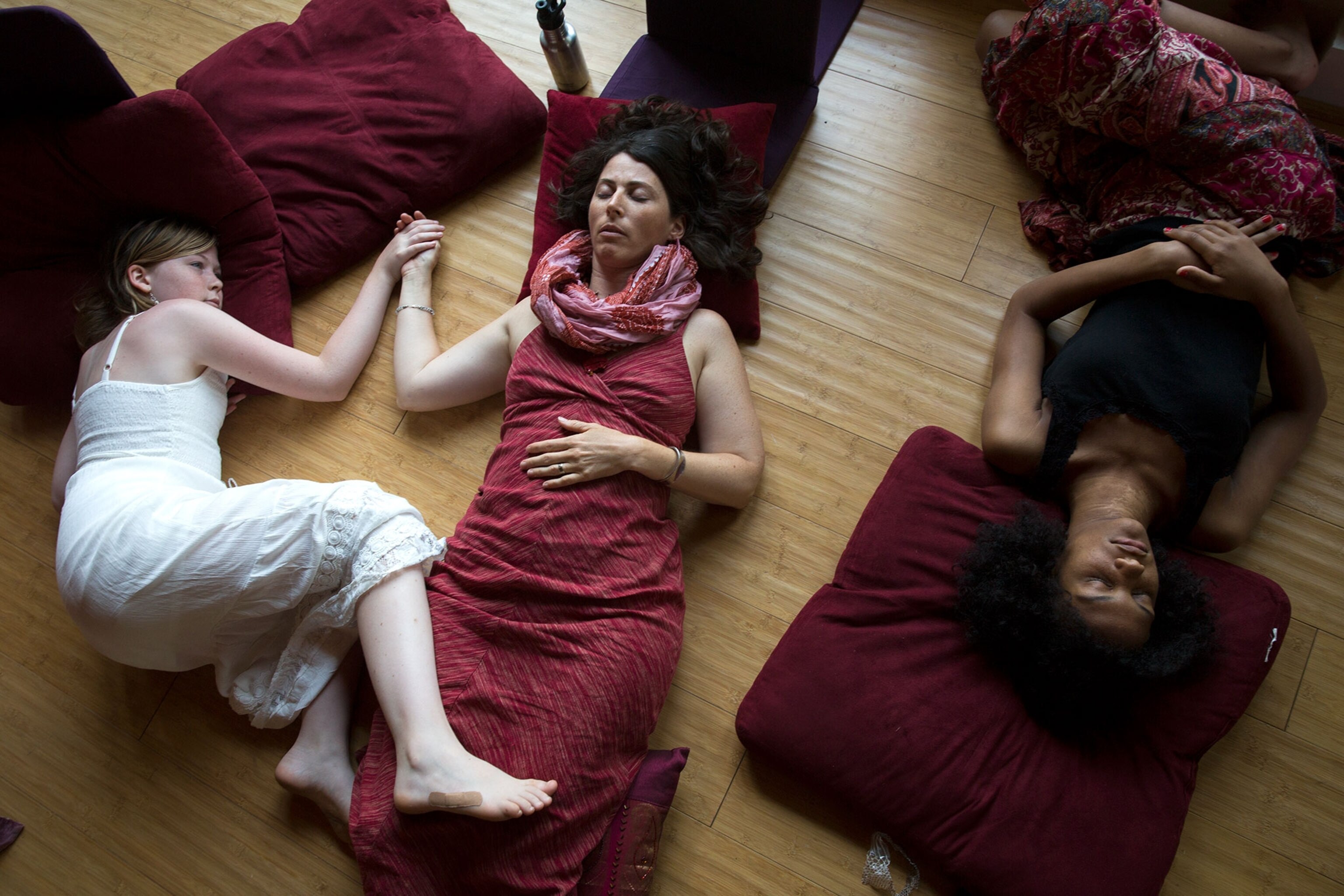
The Blooming Bodies Retreat in Louisville, Kentucky is a full day mother-daughter retreat devoted to marking and learning about a defining moment in young girls’ lives—the onset of puberty. Throughout the day, the girls learn about female anatomy, how to chart their menstrual cycles, and how to use things like tampons, diva cups, and pads. Each mother also shares her own story of menstruation. The day culminates in a ceremony where the girls are welcomed into womanhood by their mothers.
Although I was there primarily to document, I felt that I was equally invited into their circle of learning and sharing as a fellow woman. There were a few moments in the day where I was asked to give insights about my own experiences going through puberty, and I naturally obliged.
It felt so radical that this day exists to give young girls power, knowledge, and the freedom to ask questions in a very intimate and safe environment at a time when so many changes are going on in their bodies and minds, and when they are so vulnerable to losing confidence in themselves and feeling embarrassed about their physical transformations.
It makes me deeply sad to think that so few girls and women have been allowed to experience this moment of profound change as a point of celebration instead of a point of shame.
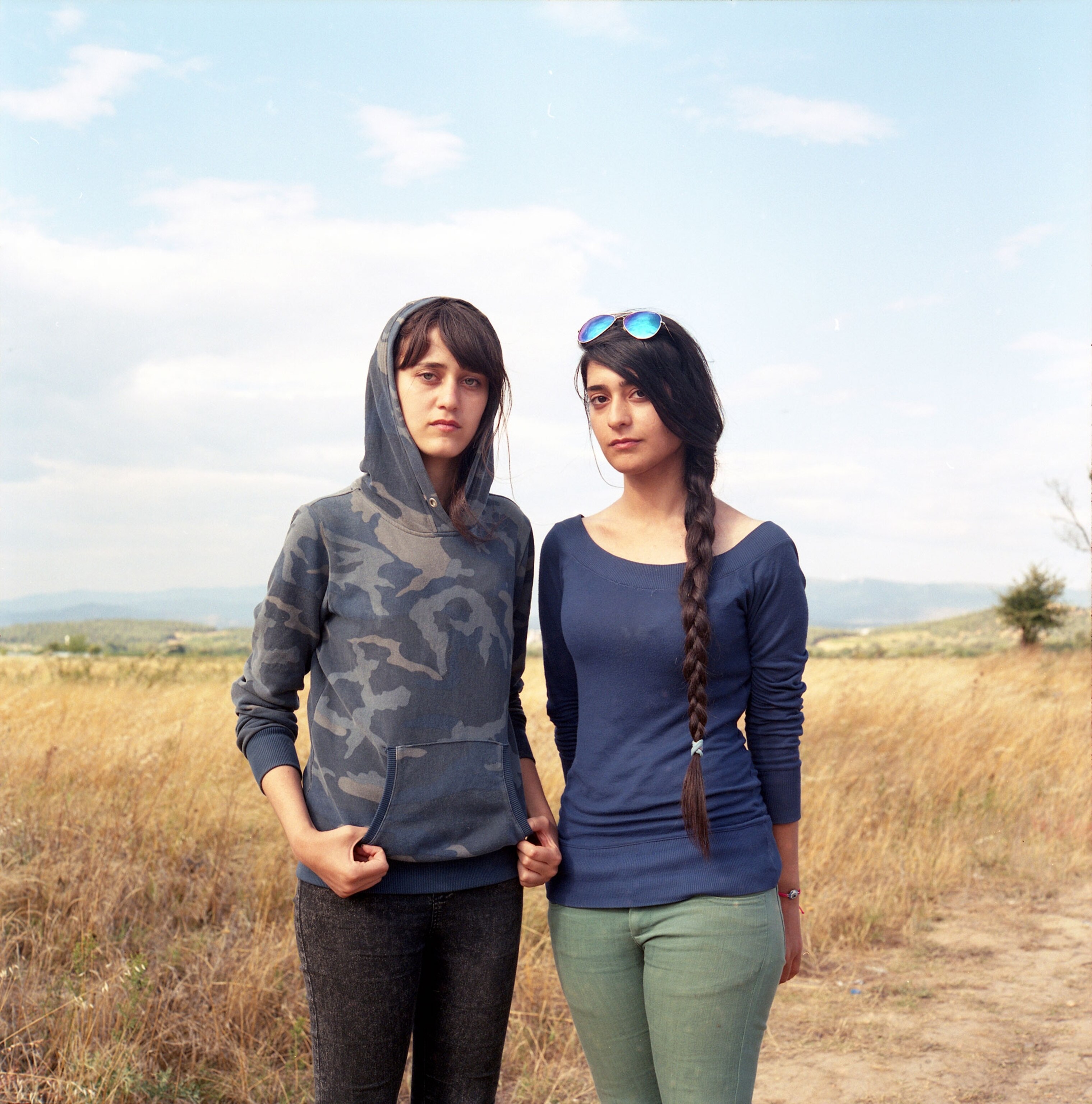
I met Hevin and her friend in the summer of 2015, between Greece and the Former Yugoslav Republic of Macedonia. They had both been university students in Aleppo and were now refugees. They were camping in the fields of Idomeni, Greece waiting for a chance to cross into the country.
At first, the girls refused to be photographed. “We look terrible,” they said. “We haven't combed our hair for days and our clothes are crumpled and dirty. Whoever sees our picture will laugh at us.” It took a long time for me to convince them. I insisted that they were beautiful and that it was natural to have messy hair after camping in the forest for several days. I also said that those who would choose to laugh at them are not worthy of their attention.
Being a woman and understanding the culture of shame gave me the confidence to press on with them, in spite of their bashfulness. Rather than fearing to be rejected, I took some time to explain the importance of being depicted in that particular moment of their lives when they were embarking on a life-changing journey. Finally, the girls trusted me more. They forgot about vanity and stood defiantly in front of my camera.
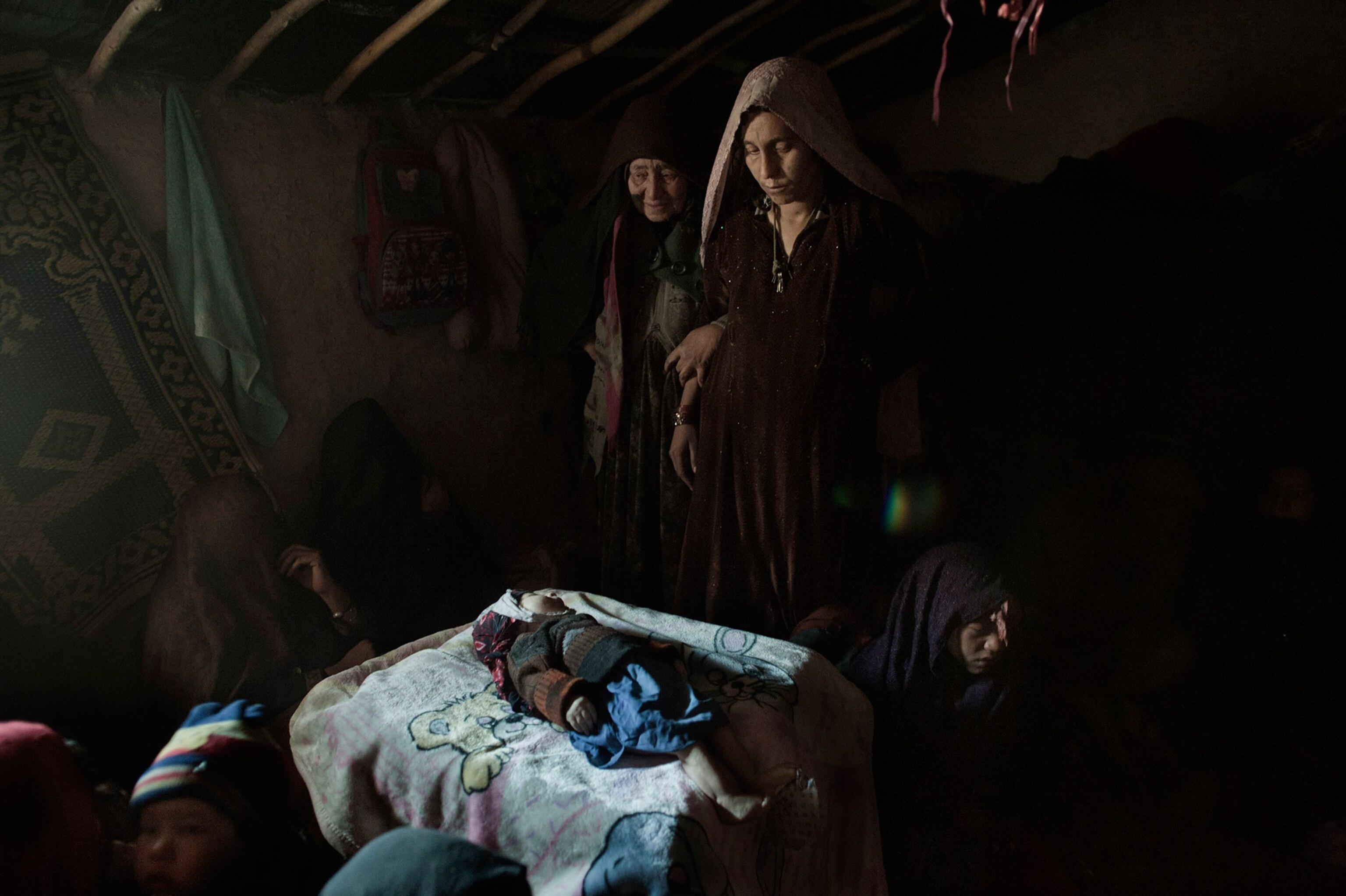
Funerals are reserved only for men in most of Afghanistan. But before the burial, women are allowed to mourn the body. On the day of this photograph, around 60 women and children pushed into a small, dark mud home in a camp for internally displaced people and closed the doors. They surrounded baby Khan Mohammed and his mother. Khan had passed away after a night of severe winter cold. The family, having fled the violence elsewhere in their country, had few resources to keep themselves warm.
War often leaves little space for the voice or experiences of women.
On that morning, this sisterhood of support brought a slow, mournful pause — a feeling of intimate familiarity — to a day of chores. The crowded room filled with the sound of shifting layers of cloth, burqas, flipped back on our heads like veils. The responsibility Afghan women bear for the health and happiness of children creates a bond, an understanding of the heartbreak that can accompany being a mother, a woman, in a society with the world's second-highest child mortality rate.
Jessie Wender is a former senior photo editor at National Geographic. You can follow her on Instagram.

